- News
- Reviews
- Bikes
- Accessories
- Accessories - misc
- Computer mounts
- Bags
- Bar ends
- Bike bags & cases
- Bottle cages
- Bottles
- Cameras
- Car racks
- Child seats
- Computers
- Glasses
- GPS units
- Helmets
- Lights - front
- Lights - rear
- Lights - sets
- Locks
- Mirrors
- Mudguards
- Racks
- Pumps & CO2 inflators
- Puncture kits
- Reflectives
- Smart watches
- Stands and racks
- Trailers
- Clothing
- Components
- Bar tape & grips
- Bottom brackets
- Brake & gear cables
- Brake & STI levers
- Brake pads & spares
- Brakes
- Cassettes & freewheels
- Chains
- Chainsets & chainrings
- Derailleurs - front
- Derailleurs - rear
- Forks
- Gear levers & shifters
- Groupsets
- Handlebars & extensions
- Headsets
- Hubs
- Inner tubes
- Pedals
- Quick releases & skewers
- Saddles
- Seatposts
- Stems
- Wheels
- Tyres
- Health, fitness and nutrition
- Tools and workshop
- Miscellaneous
- Buyers Guides
- Features
- Forum
- Recommends
- Podcast
feature
 7 reasons why you should get electronic shifting May 2022
7 reasons why you should get electronic shifting May 20227 reasons why you should get electronic shifting
Shimano, Campagnolo and SRAM have all offered electronic shifting for several years, FSA has joined them, and SRAM has updated its eTap system to 12-speed and launched a less expensive Force eTap. With complete electronic-shift bikes costing from around £2,400, should you be thinking about making the move?
Let's take a look at the advantages.
Check out our Shimano Dura-Ace R9150 Di2 review here
Improved shifts
How much more precise than mechanical shifts can electronic shifts be? Well, with a mechanical system, if you push the lever to move from one chainring to the other the front mech performs the same every time. With an electronic system the front mech acts slightly differently depending on the sprocket you’re in at the time.
Take SRAM’s eTap system. When you move from the small chainring to the big chainring, the cage overshifts slightly to help the chain make the jump. Then a fraction of a second later, once the chain is up there, the cage moves back inboard to its standard position.
When you’re shifting from the big chainring to the small chainring, the cage moves inboard in two stages. First, it shifts just enough to move the chain down. Then a fraction of a second later, once the chain is down on the inner ring, it moves a little further across. Doing things this way avoids the possibility of the chain coming off the inside of the small chainring.
The extent to which these two things happen depends on the sprocket that you’re in at the time. Say you have the chain on the small chainring and one of the larger sprockets and you want to change to the large chainring. The rear mech lets the front mech know that it needs to overshift more than it would if the chain was further outboard on one of the smaller sprockets.
The bottom line is that you get excellent shifting even under load.
Read our SRAM Force eTap AXS Wide groupset review
"Dura-Ace or Ultegra Di2 electronic gear shifting moves the chain exactly where it needs to be through a programmed front or rear derailleur position," says Shimano.
"The science behind it is truly incredible and also programmable to your specific shifting preference [see below]. You make a command and the system responds accurately every time. In a race situation the reliability and the confidence it inspires can mean the difference between making a break or not."
Quicker shifting
If you want to shift right across the cassette with a mechanical shift system, you need to press the lever more than once (different systems require different numbers of presses). With electronic systems you can shift from one side of the cassette to the other when you press and hold the lever in. It’s just a little bit easier.
Campagnolo claims that, “[EPS rear derailleur] shift times are now 25% faster that than the mechanical rear derailleur (taking just 0.352 seconds to swap sprockets)”.
Check out our reviews of Shimano Ultegra Di2.
You can customise the shifting
With Shimano Di2 and SRAM AXS eTap you can customise the shifting speed and the number of gears the system will shift when you press and hold the lever. You can also swap the functions of the upshift lever and the downshift lever, and even the functions of the left lever and the right lever. SRAM's first Red eTap system didn't have the ability to customise the shifting, but the two new AXS 12-speed groups can be customised via a smartphone app.
Campagnolo's MyCampy app allows you to customise shifter function in an EPS system.
No chain rub
Once a Shimano Di2 or Campagnolo EPS system is set up correctly, no matter what sprocket you are in you never need to adjust the position of the front mech to prevent the chain rubbing on the front mech’s side plates because it is done automatically.
After you shift the rear derailleur you’ll sometimes hear a whirr as the front mech moves slightly to take account of the chain’s new position, the idea being to improve efficiency and reduce wear.
SRAM says this isn’t necessary with its eTap system because there’s no danger of chainrub no matter which chainring/sprocket combo you’re using.
Read our SRAM Red eTap First Ride.
Simple operation
Changing gear with an electronic system requires a far shorter lever movement than with the mechanical equivalents. You’re really just pressing a button, never needing to sweep a lever across.
Moving the levers on a mechanical system is hardly the trickiest operation in the world, but it can be a bit of a reach if you want to shift across the entire range available to you. Things are just a little simpler with electronic systems.
With SRAM’s eTap system the lever on one shifter performs upshifts, the lever on the other shifter performs downshifts, and you push them both at the same time to shift between chainrings. It’s a really simple system to use, even if you’re wearing big gloves or mittens in cold weather.
Multiple shift position options
On a road bike with Shimano or SRAM electronic shifting you usually change gear via the combined brake and gear shifters, a lot like you would with a mechanical system, but you can add satellite shifters elsewhere on your handlebar to make it slightly easier to change gear in certain situations, especially when racing.

Shimano offers its Climbing Shifter that you can fix to the top section of your handlebar.
It also has a Sprinter Shifter that you can fit to the drops.
SRAM’s eTap system has satellite shifters called Blips that you can position anywhere on the handlebar, and now there's a wireless version too.
You can change gear on a time trial bike while out of the saddle
If you’re riding a time trial/triathlon bike with mechanical shifting, the shift levers will be positioned at the front of the aero extensions where they’re easy to access when you’re in your aero position. That means you can’t change gear when you’re riding out of the saddle with your hands on the base bar.

With an electronic system, you can have shifters on the aero extensions and on the base bar, so it’s easy to change gear if you’re out of the saddle when climbing or coming out of a tight corner.
Read our Campagnolo EPS First Ride from way back when it was first launched.
There’s minimal maintenance
With an electronic system there’s very little routine maintenance and you’ll never need to replace a cable. Little, if any, tuning is required after the initial set-up.
Even that initial setup is very easy with SRAM’s eTap system. It’s wireless so there’s no need to route cables through your frame.
Mechanical shifting has been working fine for many, many years and it will continue to do so, and it’s considerably cheaper than an electronic setup. If you don’t find the benefits we’ve listed above compelling enough to convince you to change to electronic, no component manufacturer is going to stop offering mechanical shifting any time soon.
One of the most frequent objections to going electronic is the possibility of running out of charge mid-ride. That’s unlikely to happen unless you really don’t concentrate. You’ll get hundreds of miles between charges on every electronic shift system, and plenty of warning that you’re low on juice.
Even if the battery does go flat, you can manually put the chain into the gear you want and ride home singlespeed.
Of course, you don’t need to make the switch to electronic shifting.
"You can also get precise, fast and accurate shifting from Dura-Ace, Ultegra or 105 mechanical gears," says Shimano. "In this sense, as well as making a command – ie pushing the lever – you also operate the system by pulling or releasing a cable.
"There's a certain art to setting up your drivetrain manually to get this level of efficiency. A lot of riders prefer to know how to operate every individual component within their drivetrain, which is easier with a mechanical system.
"With each type of shifting having its merits, the question is whether you want to command your drive train through the push of a button, or to physically operate it using a lever. Perhaps the answer is to have both depending on the particulars of your ride."
Most people we know who have tried electronic shifting for a significant period of time want to stick with it, but the choice is yours.
Mat has been in cycling media since 1996, on titles including BikeRadar, Total Bike, Total Mountain Bike, What Mountain Bike and Mountain Biking UK, and he has been editor of 220 Triathlon and Cycling Plus. Mat has been road.cc technical editor for over a decade, testing bikes, fettling the latest kit, and trying out the most up-to-the-minute clothing. We send him off around the world to get all the news from launches and shows too. He has won his category in Ironman UK 70.3 and finished on the podium in both marathons he has run. Mat is a Cambridge graduate who did a post-grad in magazine journalism, and he is a winner of the Cycling Media Award for Specialist Online Writer. Now over 50, he's riding road and gravel bikes most days for fun and fitness rather than training for competitions.
Latest Comments
- Hirsute 3 min 41 sec ago
Radar tells me their closing speed, if they are slowing and how far away. Then I decide to say a prayer. The change of light pattern is incidental.
- lonpfrb 23 min 36 sec ago
Quite so, which is why our village 20mph zone covers the whole residential extent. Of course, enforcement is another thing..
- lonpfrb 49 min 35 sec ago
No, that's very doubtful while proper testing would be fully destructive.
- TheBillder 1 hour 36 min ago
In that £1000 exactly scenario, beginners should probably be made aware that pedals will be extra.
- don simon fbpe 2 hours 3 min ago
What's wrong with dropping down on to the Millenium Bridge, or the swing bridge, then the brief, but satisfying climb back up the hill? #training....
- chrisonabike 2 hours 44 min ago
The relatives might of course disagree, but in general I'd countenance a relatively light sentence* if only we could fix it so that those who...
- ktache 3 hours 24 min ago
Id forgotten that I got a second hand set of project two's for my getting to work bike over twenty years back.
- Veganpotter 4 hours 21 min ago
My bet is that all these tires popping off are from people with bad pressure gauges or they're simply just putting too much air in on purpose. ...
- chrisonabike 5 hours 36 min ago
David9694 - you were right! These new autonomous vehicles really are conspiring to run out of control!...


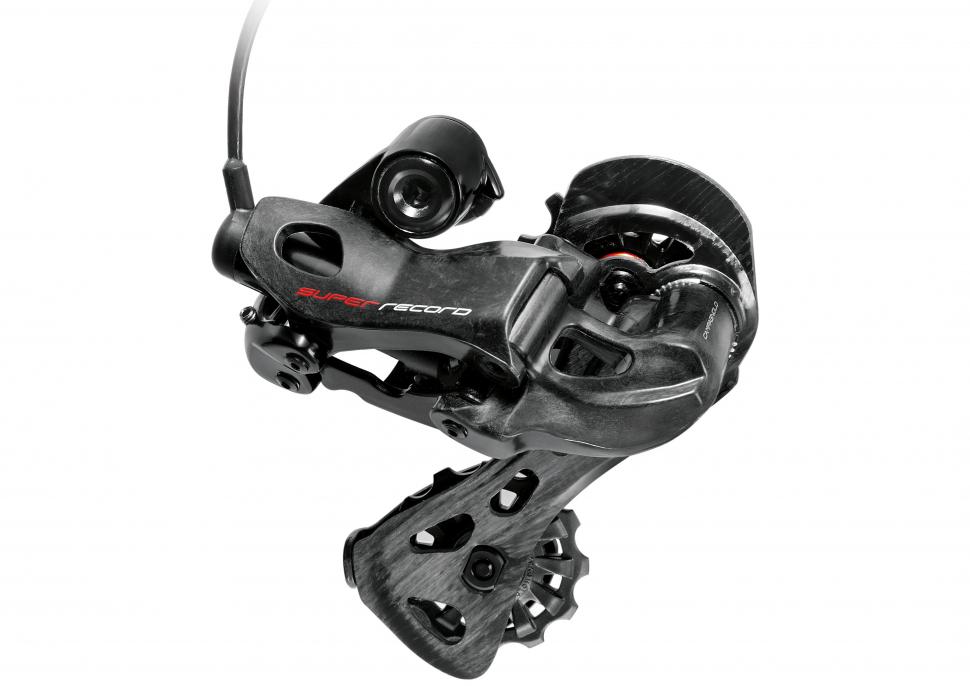
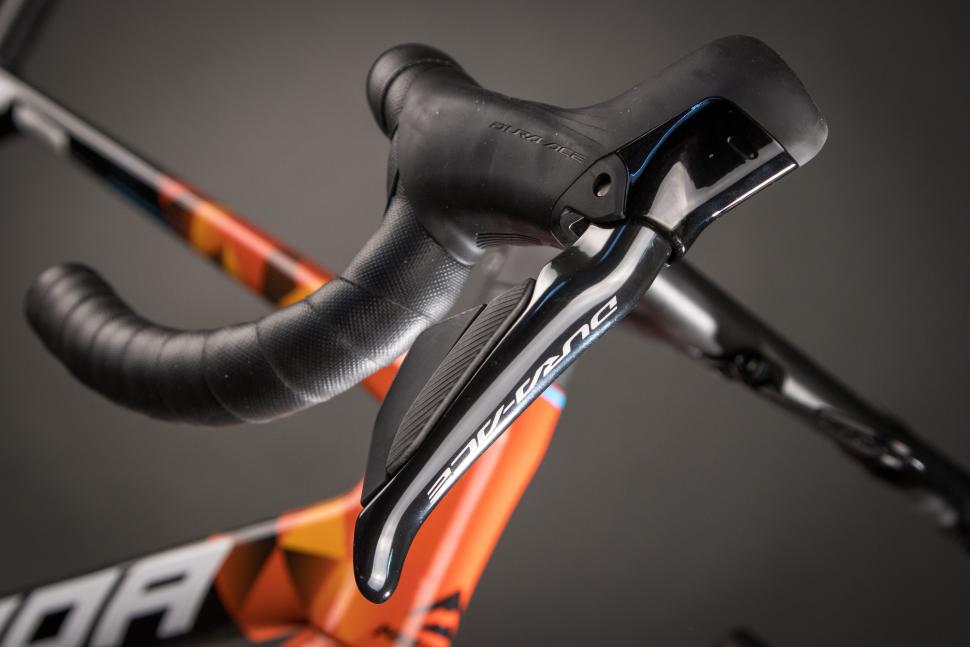

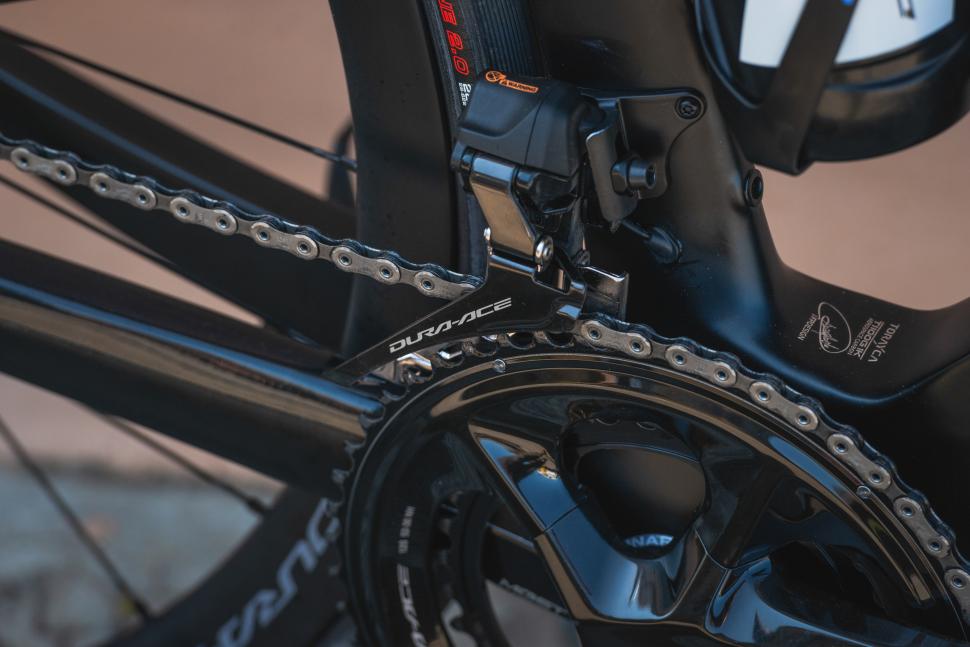
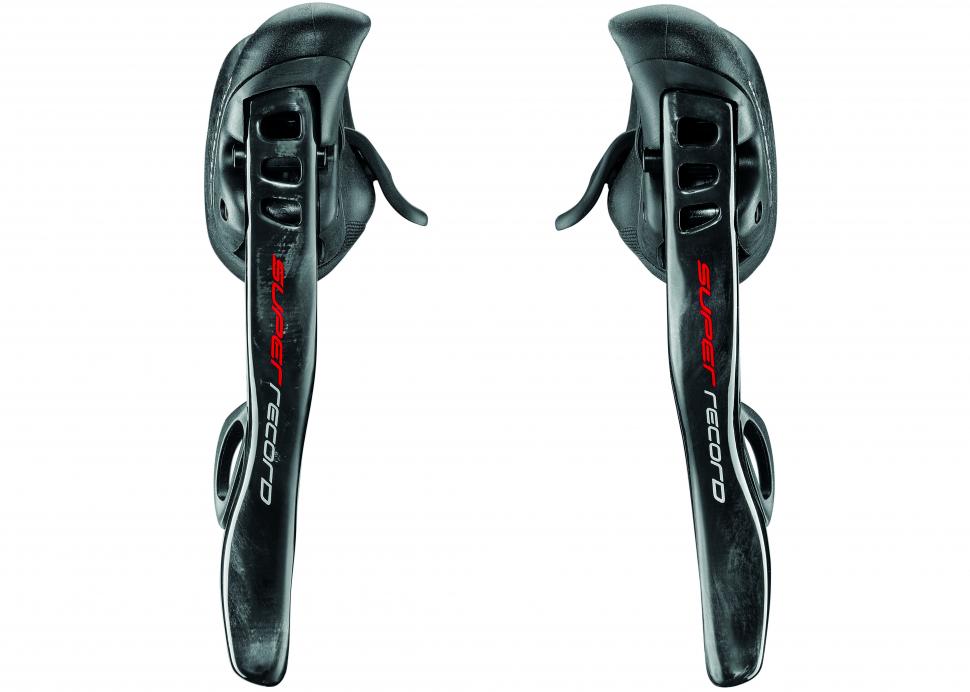

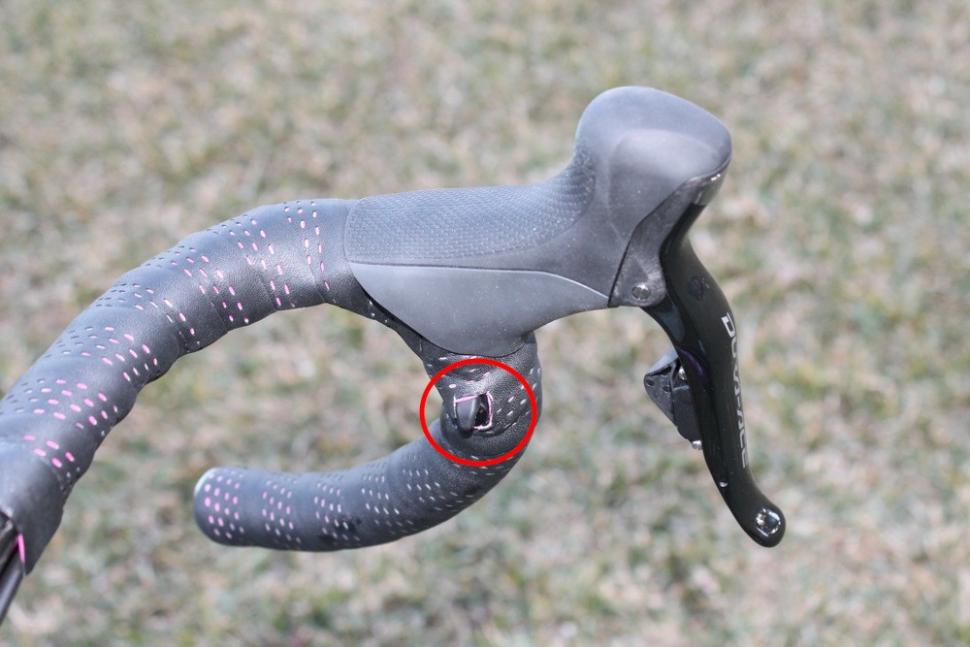
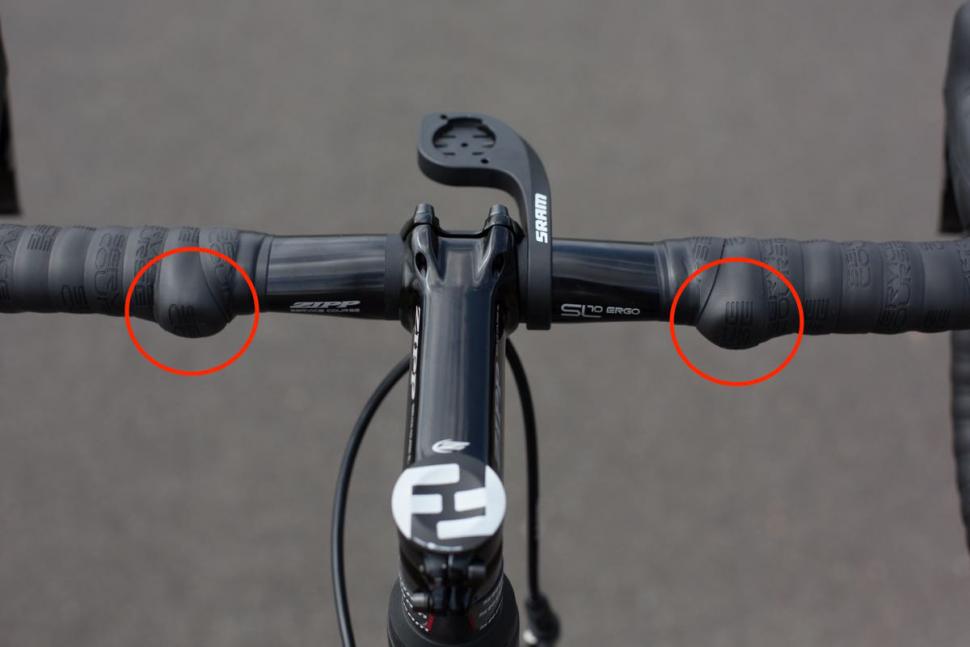

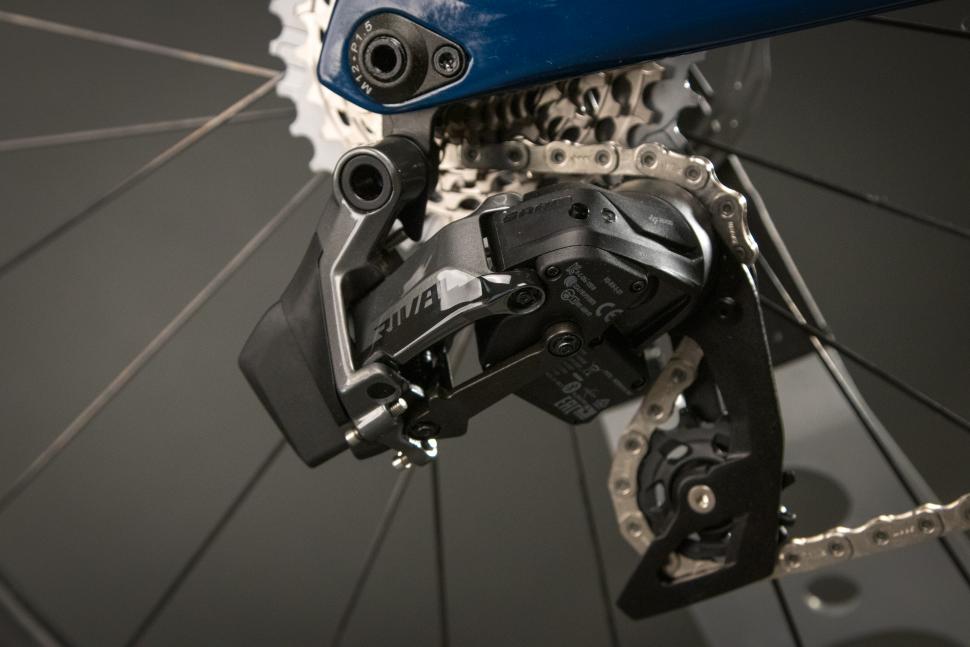
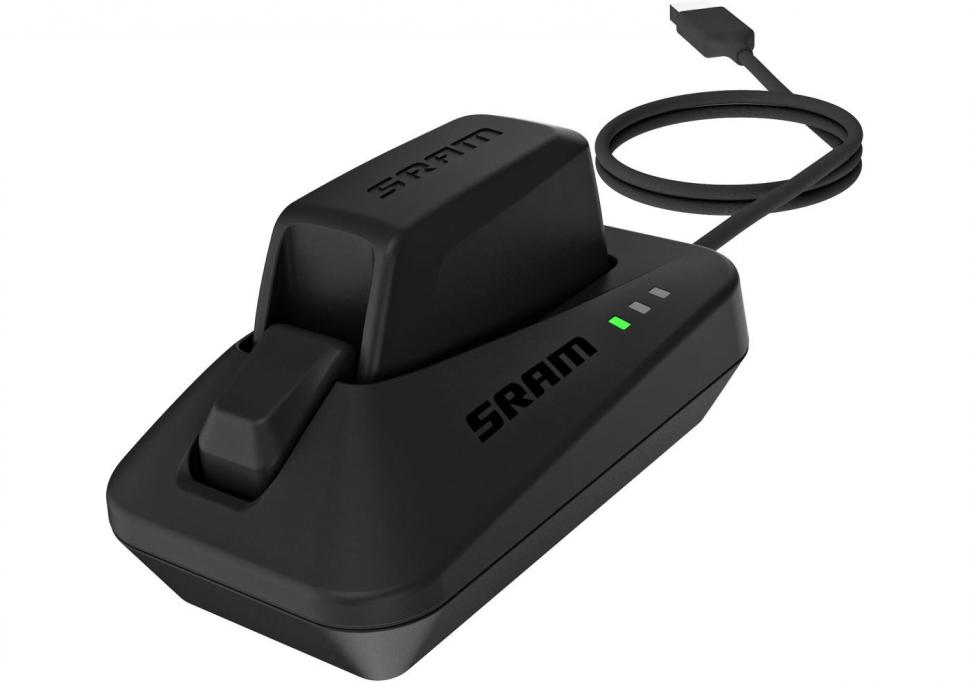
Add new comment
129 comments
Shame on you Roadcc for pushing this shit. It isn't free, so any advantages of an electronic system are negated BY THE COST! At least a grand. I could buy a whole road bike and whole mtb for that which would give years of perfectly good service. I could go secondhand and buy a fantastic road bike and fantastic mtb for that. Or I could just ride more sensibly and get fitter on the bikes I have. Stop pushing these micro benefits so ex golfers have something more to brag about...
Tried the first iteration of Ultegra di2. Once I got over the initial "shiny new toy" feeling, I found that I really didn't like it. Mechanical Chorus feels better to me. Electronic shifting is not for everyone.
To follow up on my post of 2 years ago, my Di2 is still operating flawlessly. I still don't need it, but I still appreciate it on every ride.
Not that I have the slightest desire to change my bike, but if I did for some reason have to buy another top end transmission, and certainly if I was building the bike, then I would go wireless.
Main benefit to me is the shear effortlessness of changing gear, especially towards the end of a ride when my hands are cold and tired.
Only criticism would be that the battery must be unnecessarily large and therefore heavier than it needs to be as I only have to charge it every 1000 miles or so.
Continue to be perfectly happy with mechanical shifting on the 5 bikes in the family. Admittedly one is a SRAM hub gear that I wouldn't have a clue about how to adjust (I'm guessing it's just tweaking on the cable tension like any other system). Taught my son how to use the barrel adjuster to get his rear shifting working, that was a pretty cool moment. There's something very rewarding about fine-tuning a precise mechanical system that appears to be highly complicated.
Still tempted by eTap, but they need to bring it down to Rival level before I'll seriously consider it.
Switched to Etap recently when I replaced my old mechanical worn out groupset. It's utterly brilliant. A doddle to set up, shifts perfectly, no chain rub in any gear, no missed shifts, no cable stretch, silent and on the whole, just lovely.
Do I really need it? No. Would I take it back and go back to mechanical? Hell no! Converted to Electronic? Yes. However, if I wasn't fortunate enought to be able to have it, would I feel I was losing out by sticking with mechanical? Nope.
Have Etap on one bike, SRAM mechanical (bits of Red/Force/RIval) on other bikes in the stable.
I like Etap, have had no problems with it at all in 2+ years of use and probably will stick with it on "best" bike in future. But not sure difference in use to well maintained high end SRAM (and I assume Shimano) mechanical is all that much. So IMO you spend a lot of cash for not a lot of performance benefit. Doesn't mean you shouldn't do it if you want to spend your cash in that way but the difference is pretty marginal (which is probably to be expected).
Reluctant to shift (excuse the pun) to more economical Shimano stuff because, well, wires. Also, I've never used Shimano (used Campag forever until I switched to SRAM about a decade ago) and on the few occasions I have ridden a Di2 equipped Shimano bike I estimate I have shifted in the wrong direction approx. 40% of the time. I imagine you get used to it after a while.
Specifically on Etap: would be ideal if they brought out a slightly cheaper Force version of etap, a la Ultegra Di2. Love the blips (remote shifters) on the tops/under bar tape for shifting when climbing/on dodgy surfaces when you are on tops. Another benefit to Etap is ease of removing rear mech for travel (reduces risk of mech hanger getting bent).
If you're paying for the upgrade Road.cc they I'll take it.
Otherwise, way too expensive.
If you're paying for the upgrade Road.cc then I'll take it.
Otherwise, it is still way too expensive.
Change to wireless because I just must have another thing that needs charging, I can’t fix myself and will stop working after you upgrade the software about 2 months after the warranty runs out.
Simplify yo’ life, keep cables.
up down flappy paddles and a 3x10, 4x9, 5x5 or whatever makes the most sense from a weight perspective.
One of fastest riders in my club uses a mechanical 8 speed cassette, downtube shifters, ally rims, no computer and he is over 60. I would like to go as well as him!
One of fastest riders in my club uses a mechanical 8 speed cassette, downtube shifters, ally rims, no computer and he is over 60. I would like to go as well as him!
One of fastest riders in my club uses a mechanical 8 speed cassette, downtube shifters, ally rims, no computer and he is over 60. I would like to go as well as him!
Electronic has minimal maintenance? hmmm, will maybe that's because the home mechanic doesn't know how to fix it? What's considered minimal? battery has to be replaced every 2 to 3 years? And some people only got a year out one; and the battery costs around $120, lets compare that to mechanical, what gets replaced with those? the cables, how often, some do it every season but mine typically lasts 5 to 8 years, how much does cable cost? $25 for top of the line cables. Firmware upgrades needed on electronics not on mechanical, and a lot of people get upgrade issues after they did it. Mechanical can go out of adjustment and supposedly electronic won't but I heard that did happen a lot of times in the TdF, and , but regardless I've have a lot of mechanical derailleur systems and they rarely go out of adjustment. What else does maintenance mean? Some say the gears and chains don't wear out, that's not true, they wear out the same and have to be replaced. What about maintaining the battery charge? there is no need for that with mechanical. And of course the battery won't work at sub freezing temps.
Shifting under load? I hear this all the time which strikes me as odd because I use to ride mountains of So California and found a friction derailleur back in the day called Suntour Superbe Tech that could shift under massive load, while it did sounded like something broke because it would shift with a bang under load when it shifted it was simply shifting fast and nothing broke, I also had mid and high end SIS that would do the same thing, my most modern 105 briftor system does as well as it should since it's nothing but an SIS system with the shifters moved to the brake levers.
The only real advantage that I found significant with electronic shifting is how fast the front derailleur shifts, no mechanical system ever worked well for the front, but now that may be negated with manufactures slowly doing away with the front derailluer.
Cost? of course the electronic is going to be more expensive but who cares? if you can afford it then it doesn't matter.
Chris Boardman described electronic shifting as 'a solution looking for a problem' and I'm inclined to agree. Face it, most of the advantages of electronic shifting make very little or no difference to the actual speed of most people's bike rides. Virtually all the performance advantages of electronic shifting will only make a difference to closely matched professionals who might be looking for fractions of a second in races, the results of which can be the difference between gaining or losing next year's contract and income. For these men and women - who, crucially, don't own their bikes - there is no cost to consider. When the stuff breaks they give it back or throw it away.
I think if we're honest, the only thing most people like about electronic shifting isn't the fact that it could mean a fraction of a second career-defining stage win in the Giro, (or even the the local amateur club crit), but that it offers lots of extra, hugely expensive and mostly superfluous gadgets and features. Most of these we will never properly benefit from and some of us, as is the way of these things, may even never get to work properly anyway.
I think if you're into cycling for the long term, electronic transmissions could prove even more expensive than they first appear. For me, and probably many others on this forum, a key feature of running several bikes over many years (three decades in my case) is the building and rebuilding of machines and the mixing, maintaining and re-using of parts. For me this is an important part of owning, maintaining and riding and racing bicycles. It's efficient and hugely satisfying.
For tiny and mostly irrelevent gains, I see the development of electronic transmissions as a threat to cycling, not a benefit, with its emphasis on non-user-seviceable parts and built-in obsolesence and with servicing and repairs and their attendant costs entirely in the control of the manufacturers.
On a recent cycling trip our bikes where stored in a hotel storage room. My friends bike was moved slightly by the hotel personel, so that the DI2 shifting lever was slightly pushed on during the night. No shifting possible the next day, battery completely drained. Best day of the trip ruined. Big advantage.
I would not even be considering electronic shifting if I could get more than a year out of the rear shift cable (with its sneaky hidden destruction inside the shift lever assy) and the front derailleur follies drama. Maybe I could handle one or the other, but dealing with both issues has pretty much pushed me over the edge into to going electronic and being done with it.
I've only read two pages of comments, so it may have been said. My Di2 sends info to my head unit to tell me what gear I'm in. I'm no pro and sometimes I lose track, and cycling in the steep Spanish mountains its good to know if you need to "man up" or if you have another cog left.
I also, ultimate sin of sins, use the function that shifts my rear two up or two down when I move the front, it saves me a few "clicks".
Having tried Di2, I can see why it is popular and why it is to be desired..
To me personally, however, a bike that needs charging in order to fully function somehow misses the point of what a bicycle is to me it is a mode of transport, a device that enables you to get from point A to point B completely independently, and with no additional energy input other that that produced by your own body! It is fully independent! Each to their own though
to me it is a mode of transport, a device that enables you to get from point A to point B completely independently, and with no additional energy input other that that produced by your own body! It is fully independent! Each to their own though  (and yes, I'm aware that lights fall into rechargeable territory, however a bike can operate without them, plus lights can be connected to dynamos which follows the same ethos)
(and yes, I'm aware that lights fall into rechargeable territory, however a bike can operate without them, plus lights can be connected to dynamos which follows the same ethos)
Having tried Di2, I can see why it is popular and why it is to be desired..
To me personally, however, a bike that needs charging in order to fully function somehow misses the point of what a bicycle is to me it is a mode of transport, a device that enables you to get from point A to point B completely independently, and with no additional energy input other that that produced by your own body! It is fully independent! Each to their own though
to me it is a mode of transport, a device that enables you to get from point A to point B completely independently, and with no additional energy input other that that produced by your own body! It is fully independent! Each to their own though  (and yes, I'm aware that lights fall into rechargeable territory, however a bike can operate without them, plus lights can be connected to dynamos which follows the same ethos)
(and yes, I'm aware that lights fall into rechargeable territory, however a bike can operate without them, plus lights can be connected to dynamos which follows the same ethos)
Its all progression, and business. How many of us would love to go back to lever shifting over two sprockets and cane rims???
Wow, just like all my Campag mechanical groupsets. Amazing.
"With complete electronic-shift bikes costing from around £2,400(link is external), should you be thinking about making the move?"
I think the price excludes me from answering that question.
.. there's only one reason people need to move to electric shifting..
When the front derailler moves it sounds like your bike is from Cybertron.
'VOOOOO' - never gets old.
No
This is the primary reason for me.
I just think Di2 is a bit of luxury - it's like having a butler change your gears for you.
If the battery runs out on EPS, I believe you can decouple the rear mech and just put the chain on whatever cog you want (Ride Back Home) - don't know Di2 has something similar, but if it barfed due to battery drain rather than a fault then it looks like you would have had to ignore an enormous amount of warnings and opportunities to select a suitable gear.
I agree with some of that. I certainly don't see any performance benefit with electronic shifting except for the few times that ordinary shifting doesn't work as well as it should (e.g. cable stretch; not adjusted correctly etc). The main benefit, as I see it, is it makes riding a little bit more fun (transformer noises!).
The prices will undoubtedly come down as other manufacturers get involved and provide a bit of competition and as the tech trickles down into cheaper groupsets. To be honest, I don't see the proprietary tech as being too much of an issue apart from cost of parts as it's quite easy to replace cables/batteries/shifters as needed without having to go to a shop. I've been quite happily performing firmware upgrades just using the usb interface/charger that you get with a Di2 system without having to pay £150 for the diagnostic thingamijig. As you can easily add a bluetooth/ANT interface, it doesn't really make much difference that the wire protocols aren't open.
I really can't see standard shifters going away anytime soon due to the sheer number of existing bikes and the cheapness of modern manufacturing.
That's not the shifters fault though. Poor shifter brutally tortured like that all night.
The simplicity of mechanical will always win in certain situations. For me DI2 has been a delight. I won't cry about not having electric shifting on future bikes, but it's certainly something I prefer.
Is it beyond the skill of the 'modern' cyclist to simply have a look down to see where your chain lies/how many sprockets you have left in hand? I mean, even Chris Froome could do that whilst on a steep climb never mind a non competitive type, and in any case how is that going to help you, you can't magically produce a lower or higher gear can you, so what if you know what gear you are in and have only one sprocket left, how is that going to actually change anything if you don't know?
Your statement makes zero sense whatsoever, either you can cycle up the hill in the lowest gear you have or you can't, you don't run out of gears nor have to 'man up(whatever the hell that means), you simply haven't fitted a low enough gear for your ability/difficulty of terrain or you have to push harder to keep going than you might have expected to.
knowing where you are on the sprockets is immaterial to your ability to get up a slope or not.
Pages